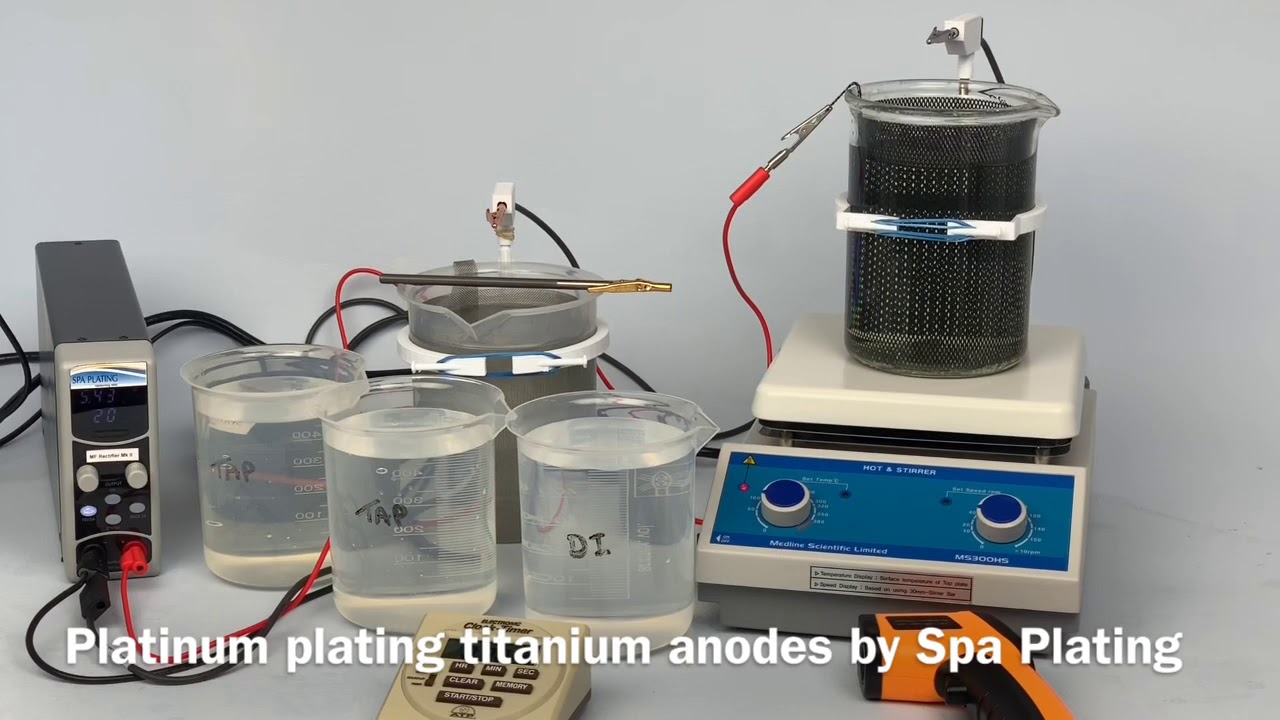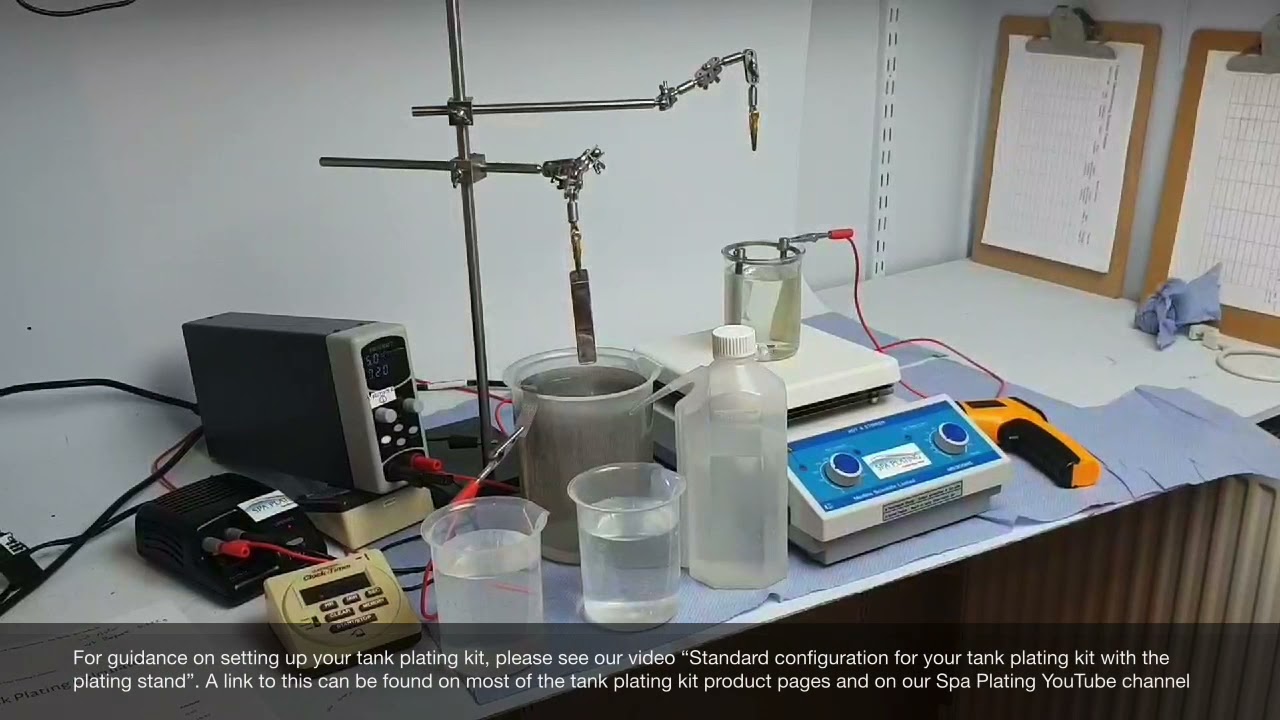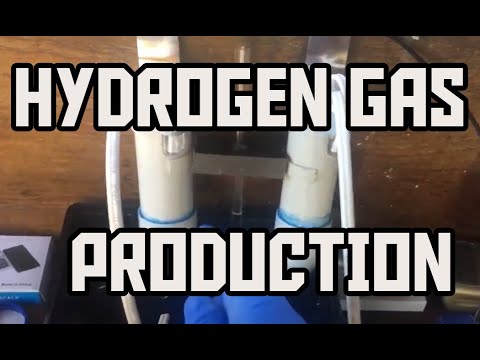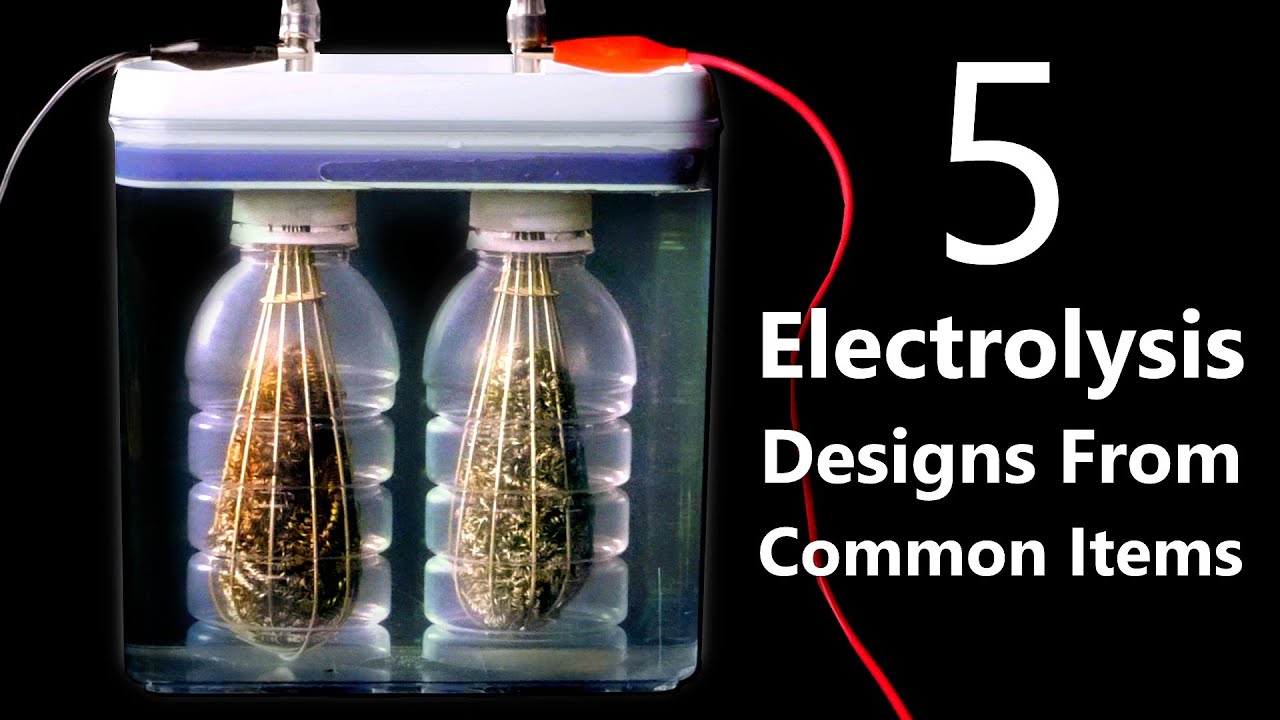I decided to run an experiment to test two different platinized electrodes for the in-situ electrolysis, and thought I’d write up the results.
I bought a platinized titanium mesh electrode on Ebay for £8.72 and like @Martin I cut out a smaller piece using a hacksaw to be able to fit it inside the Pioreactor’s 20mL vial.
I 3D printed the vial cap for eIetrolysis and CO2 sparging and attached ring terminals to two female Dupont wires. I then used a short 10mm bolt and two nuts to attached the electrode and wire to the vial cap. I also attached an M4 stainless steel bolt and nut to the other ring terminal through the vial cap.
I made up some macro nutrient solution (with no micronutrients and distilled water) and added it to the vial. I connected the platinized mesh electrode to channel D positive on the Pioreactor, connected the stainless steel electrode to channel D negative and set the LED channel D intensity to 10%:

I then placed the vial inside the Pioreactor and measured the change in optical density over 6 hours:
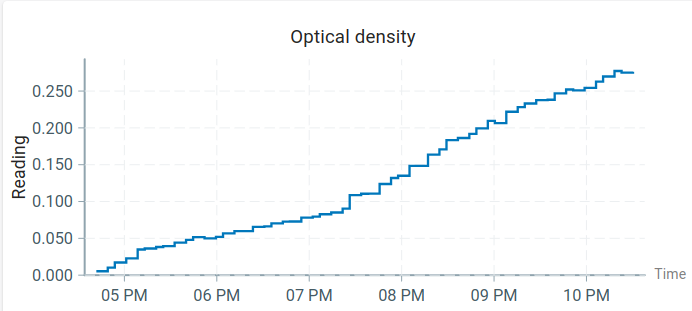
That’s a big OD increase considering that there was nothing growing in the nutrient solution:
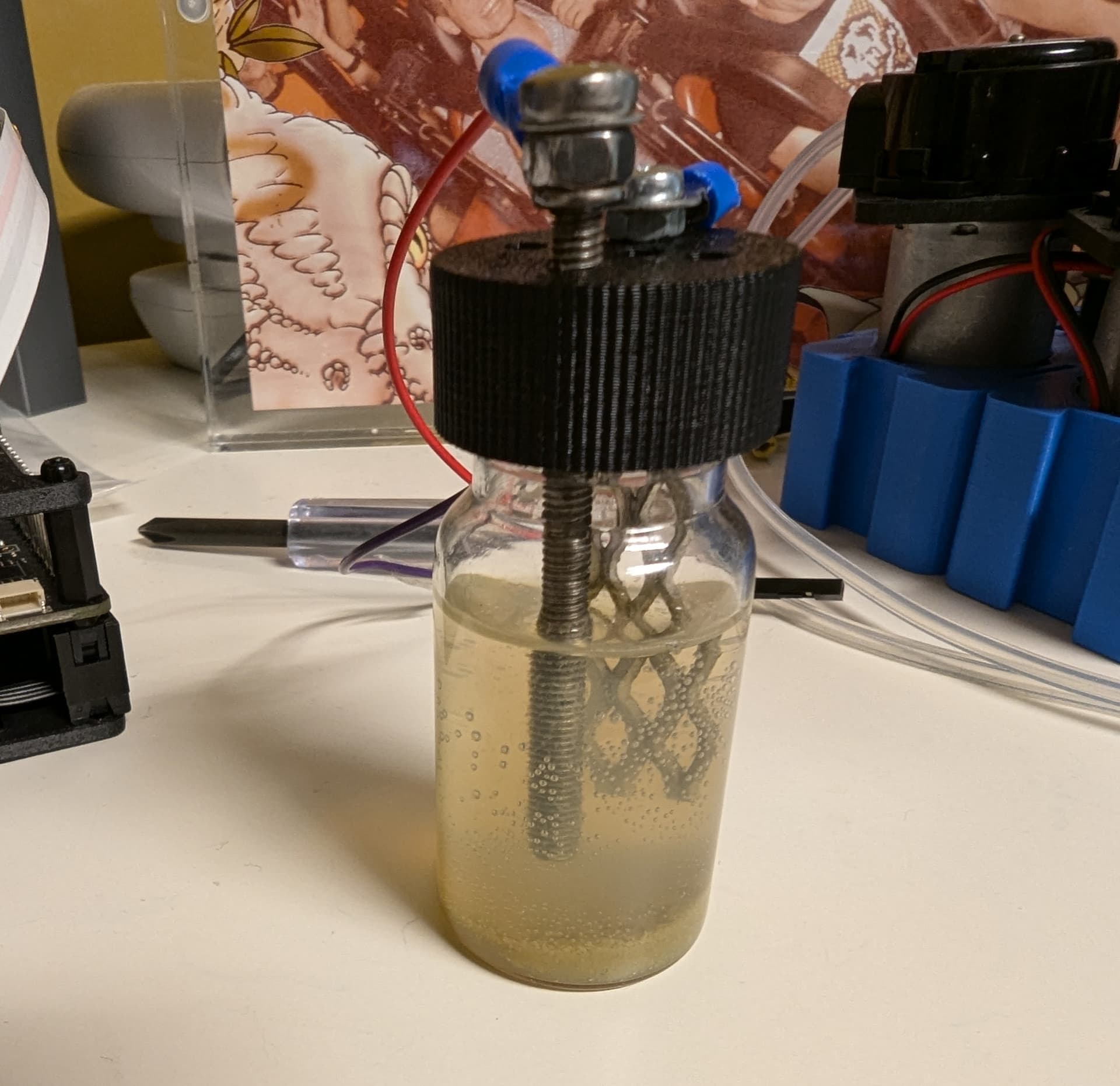
I suspect the platinized titanium electrode is maybe not platinized and/or made of titanium, as it was looking worse for wear, while the stainless steel electrode looked fine:
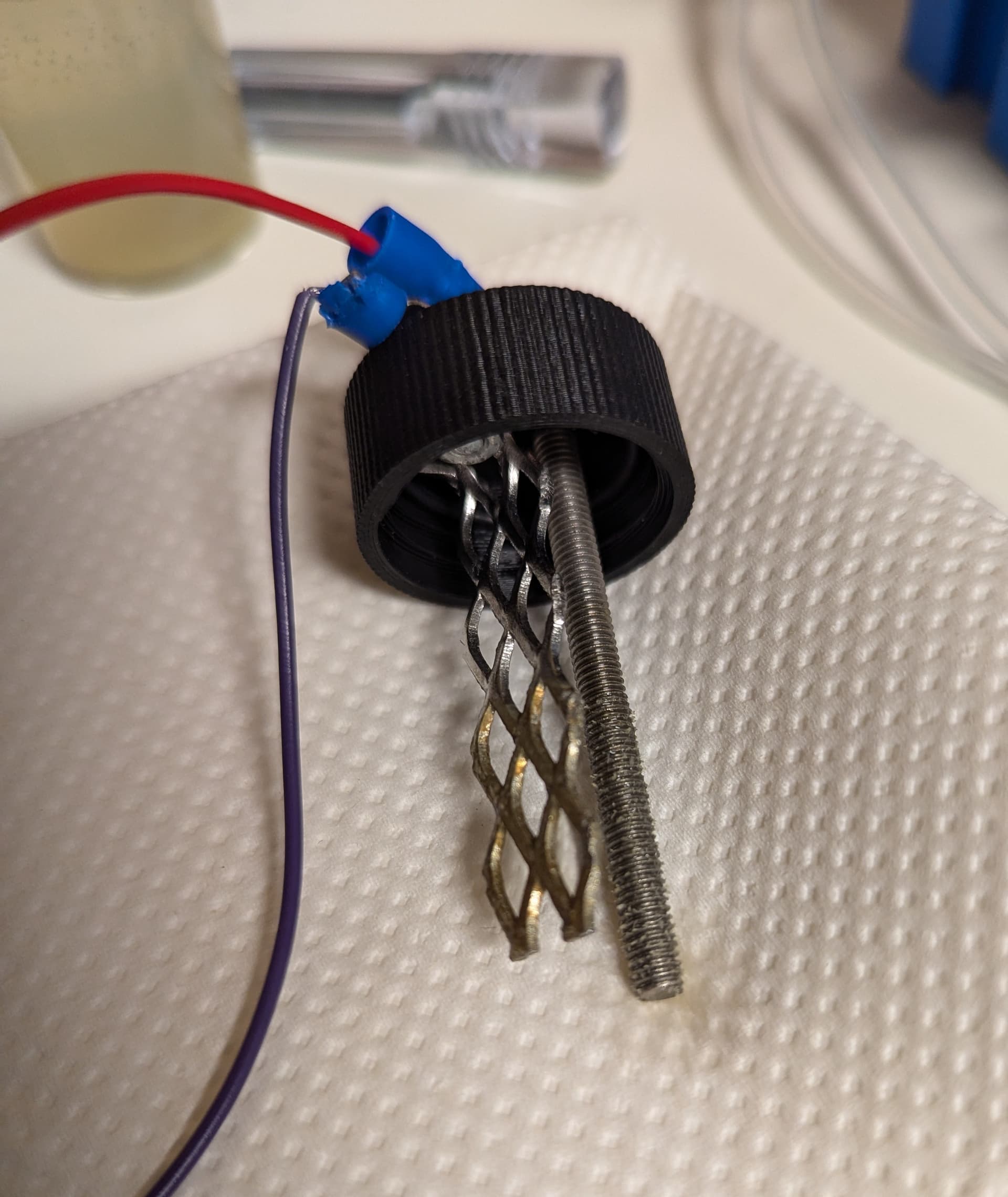
Next up I wanted to repeat the experiment with a short platinum electrode I bought for £28.60 (including shipping). It was significantly more expensive than the mesh version, but is just the right size to fit inside the vial and would provide a good baseline as I’m more convinced that this electrode was platinized and made of actual titanium.
I designed a vial cap that would fit the short platinum electrode and wired it up using a crocodile clip instead of a ring terminal. I used the same stainless steel electrode from the previous experiment and refreshed the nutrient solution:
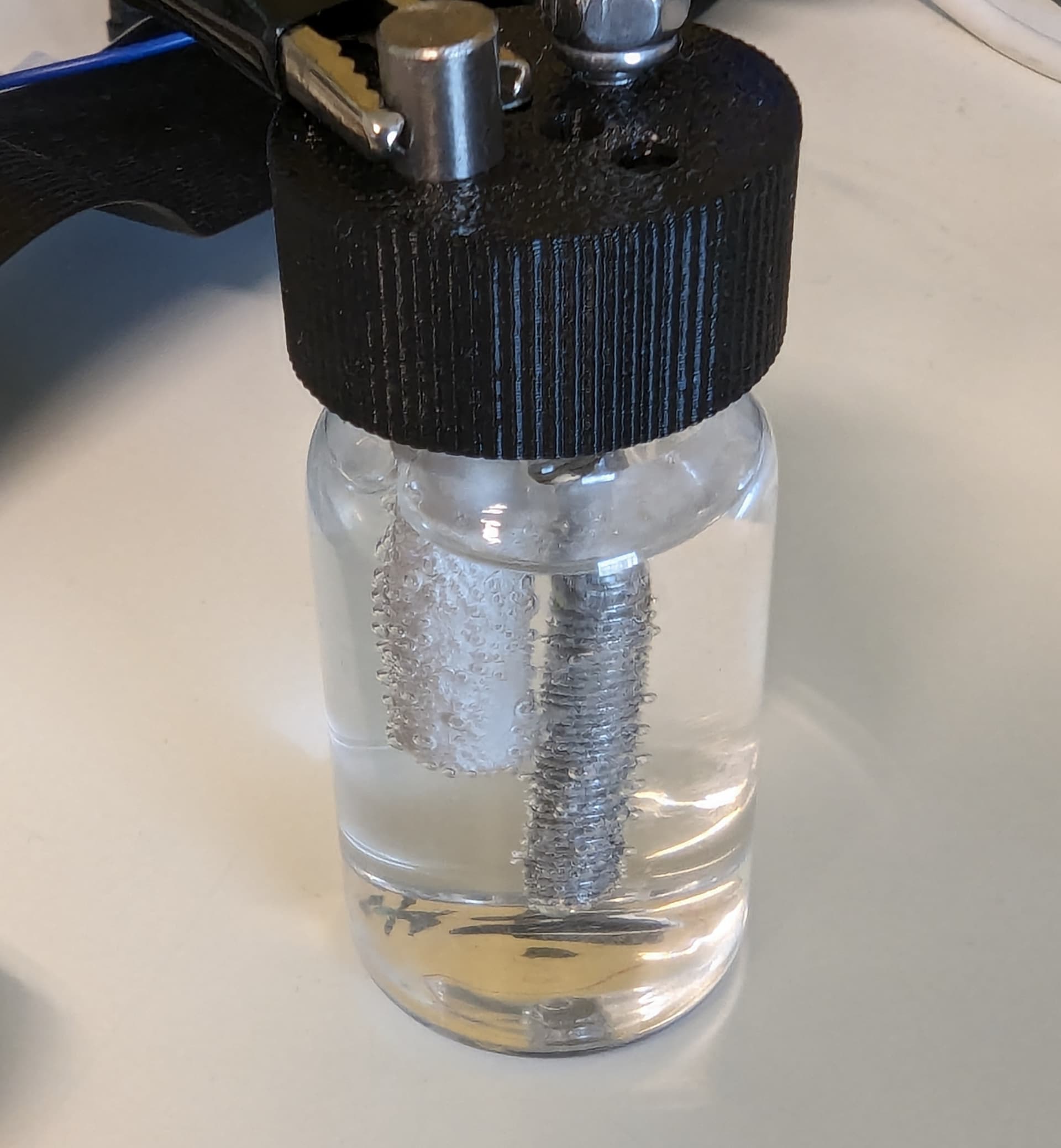
Again, I set the channel D intensity to 10% and waited another 6 hours:

As you can see there was very little variation in the overall optical density. The variations can probably be accounted for by the hydrogen and oxygen bubbles in the solution.
The solution was also still clear:
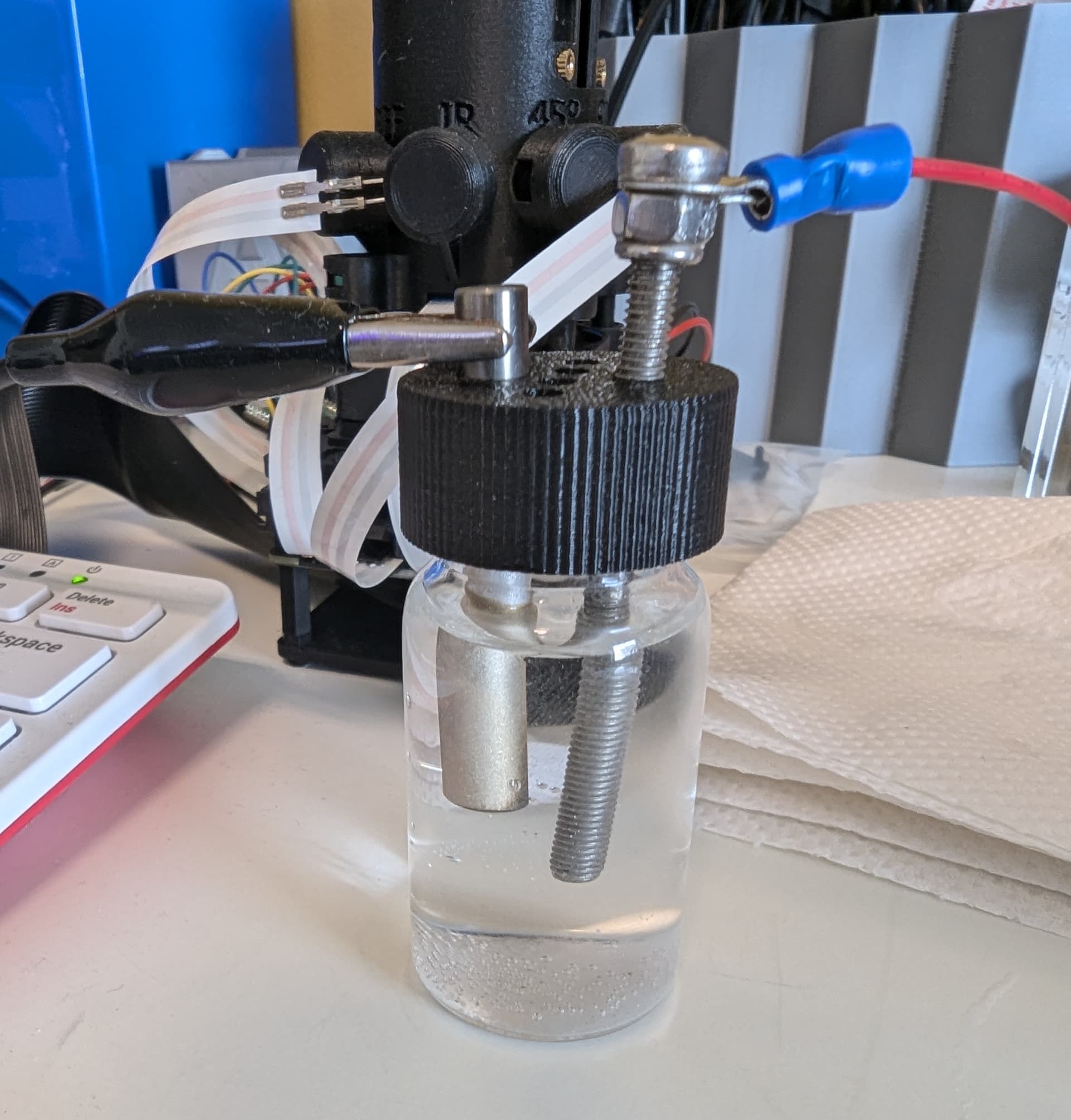
There was some discolouration on the platinum electrode, so maybe we should decrease the channel intensity even further to prolong the lifespan of the electrode:
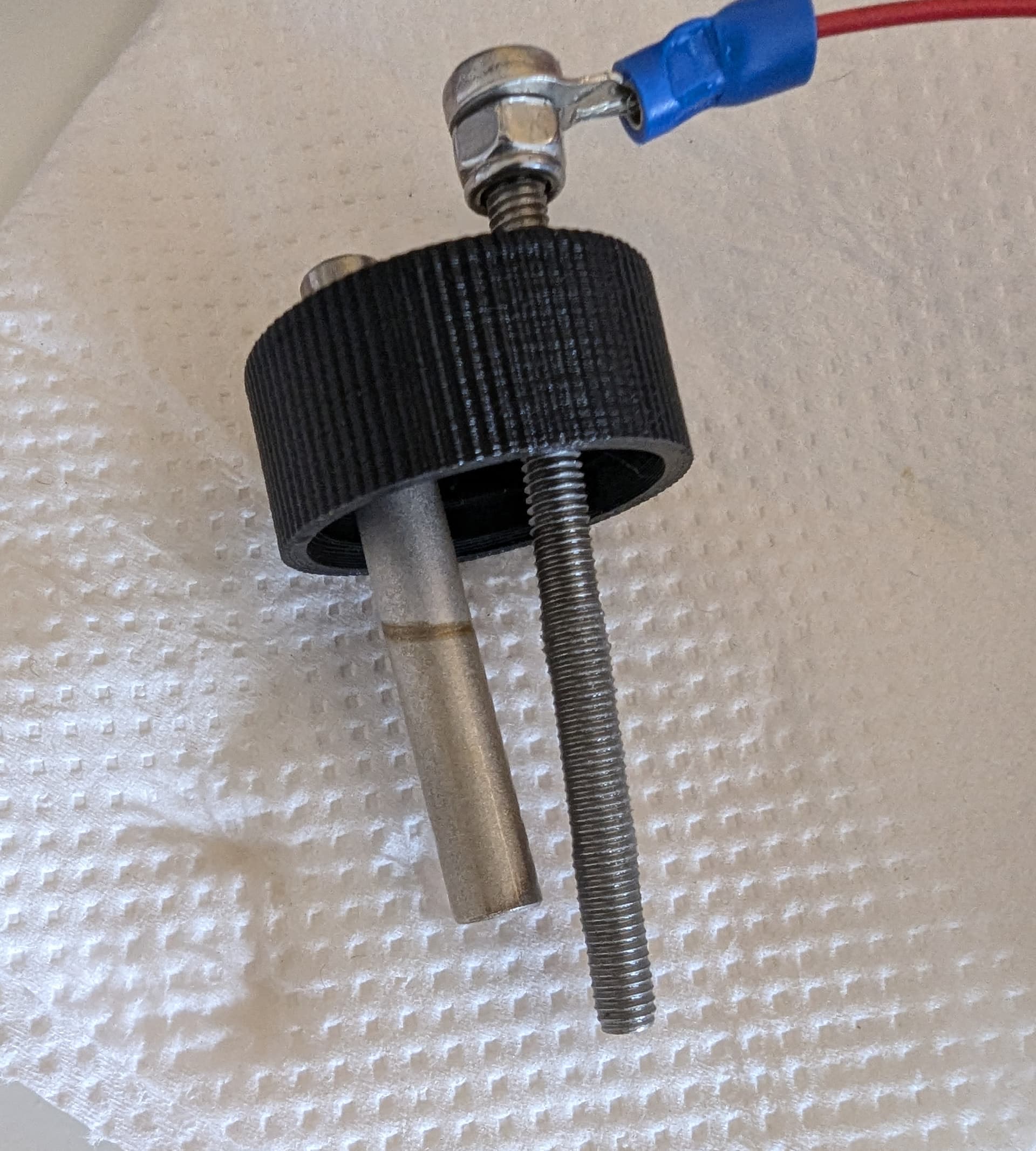
From these two experiments, I think it’s safe to assume the mesh electrode is not fit for purpose. Maybe someone knows of a more reputable source of the platinized mesh electrodes that would like to repeat this experiment?
